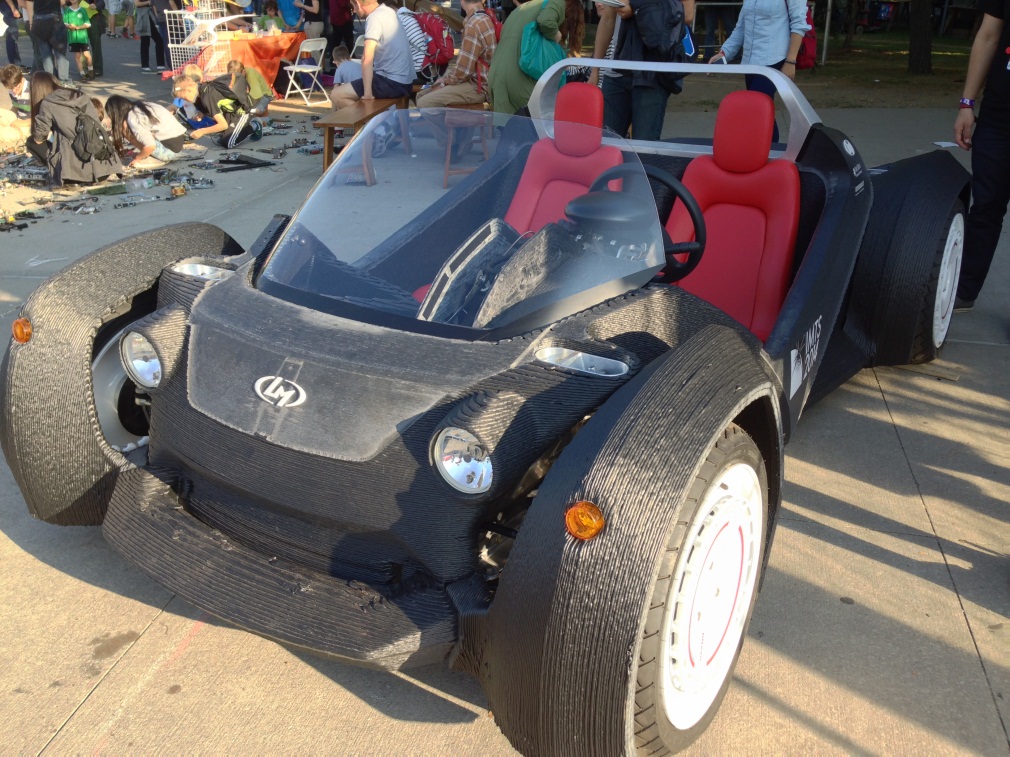New 3D Car Printing Technology Explained for Auto Mechanic Training Students
 Source
Source
A 3D printer is a pretty amazing device that can print solid objects in plastic, metal, nylon, and a wide selection of other materials. The concept was first discovered in the 1980s, but truly came to life in the early 2010s. The scope of 3D printing has rapidly expanded in only a few years, and today 3D printers are busying making aircraft parts, human organs, clothing, and now – even automobiles. Any student in auto mechanic training who is up to date on current trends will have heard of Local Motors, a small-scale American automotive manufacturer and creator of the world’s first 3D printed car: the Strati.
The Strati
Before setting out on their mission to create a 3D printed car, Local Motors had a vision to narrow down the scale of automotive manufacturing. Cars normally have over 25,000 individual pieces, and depending on the model, can take up to several weeks to build, including the paint job and engine construction. It might come as a shock to those of you in automotive mechanic schools, but the Strati 3D printed car takes only five days to complete and has only 49 parts. The process for creating the Strati is 44 hours of printing, one day of milling and two days of assembly – making it a five day manufacturing process. “Printing” uses a mixture of liquid plastic reinforced with carbon fibre. The Strati has a top speed of 64km/h and will cost around $18,000 to buy.
The Printing Process
Local Motors claims that 3D printing will shorten development cycles, cut prototype costs, reduce mechanical failures and test new methods of fuel efficiency. The main body of the Strati is printed using a Big Area Additive Manufacturing machine (a large-scale 3D printing machine), which follows a digital design made using CAD software. After the printing is complete, certain parts of the vehicle are placed on a computer-aided router, which smooths areas of the exterior for a more polished look. The steering, suspension, seats, battery engine and lights are all components of the Strati which are not 3D printed.
The Future of 3D Printing
The Strati is not quite street legal yet, as it’s still in the prototype phase. Students set to graduate from auto training school will be excited to know that the Strati may be street legal as soon as 2015. Local Motors is making great leeway with their invention, and have already brought down the printing time of Strati from 140 to only 44 hours. The company is expecting to bring this time down even further to just 10 hours.
Of course, if we can 3D print Strati, the design possibilities are essentially endless. The Strati is by nature fully customizable, as additions can be easily made through CAD. In theory, damaged parts could easily be repaired by reprinting, and Local Motors even envisions a time in the near future where older 3D cars could be melted down and reused for future printing. There may soon even be a day where car buyers can walk into a dealership with their own vehicle design and have it printed for them.
Check out this cool time lapse video of the Strati being printed:
What is your opinion of 3D printed cars? Do you trust them? Do you think they’ll become the new normal?
